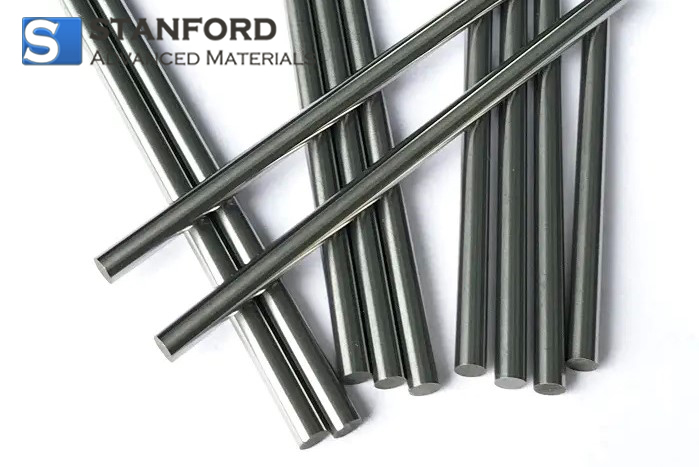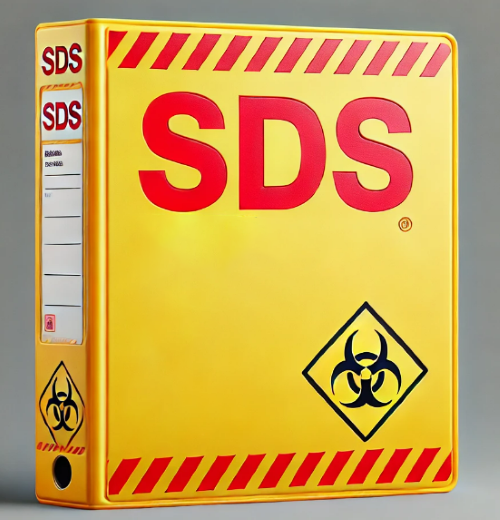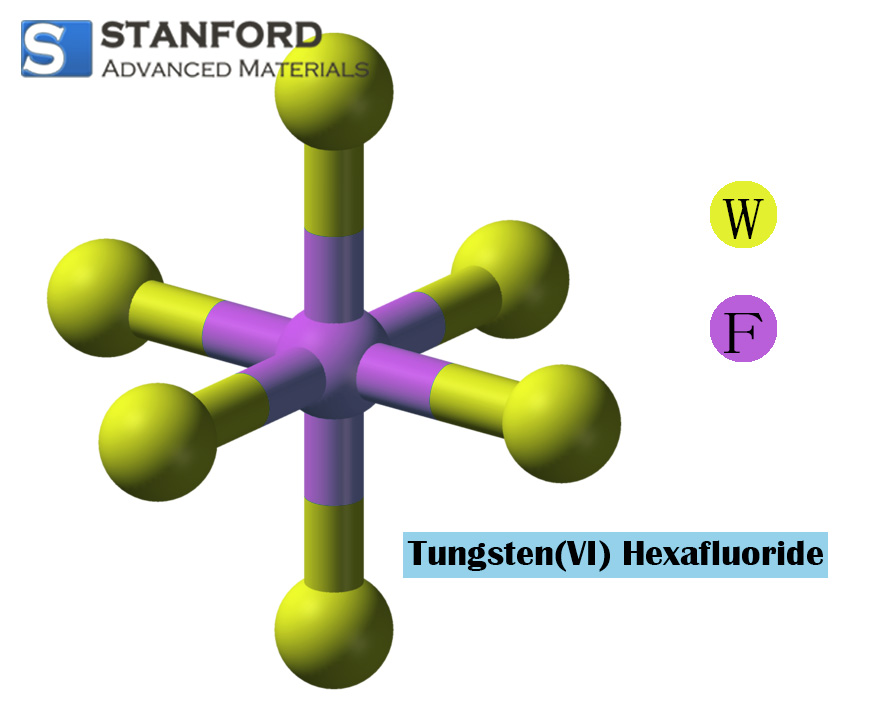MSDS Of Tantalum Powder
1 PRODUCT AND SUPPLIER IDENTIFICATION
Product name: Tantal-Pulver
Formula: Ta
Supplier: Stanford Advanced Materials
23661 Birtcher Dr., Lake Forest, CA 92630 U.S.A.
Telephone: (949) 407-8904
Fax: (949) 812-6690
E-mail: sales@SAMaterials.com
Recommended uses: Scientific research
2 IDENTIFICATION OF HAZARDS
GHS Classification (29 CFR 1910.1200): Flammable solid, Category 1.
GHS Label Elements:
Signal word: Danger
Hazard statements: H228 Flammable solid.
Precautionary statements: P210 Keep away from heat, sparks, open flames and hot surfaces – No smoking; P370+P378 In case of fire: Use dry powder extinguishing agent (Class D).
3 COMPOSITION / INGREDIENT INFORMATION
Constituent: Tantalum
CAS No.: 7440-25-7
Percentage: 100
EC Number: 231-135-5
4 FIRST-AID MEASURES
Inhalation: Remove the person to fresh air. Maintain warmth and calm. If breathing difficulty persists, supply oxygen and seek medical advice.
Ingestion: Rinse mouth with water. Do not induce vomiting. Consult a doctor if irritation continues. Never induce vomiting or offer any substance to an unconscious person.
Skin contact: Remove contaminated clothing. Brush off the material from skin and wash the area with soap and water. Seek medical advice if irritation persists.
Eye contact: Rinse eyes with lukewarm water for at least 15 minutes, ensuring the upper and lower eyelids are flushed. Consult a doctor if irritation persists.
Primary symptoms/actions, both immediate and delayed: May cause irritation. See Section 11 for further details.
Medical advice: No additional pertinent data are available.
5 FIRE-FIGHTING MEASURES
Extinguishing media: Use a dry powder suitable for Class D materials.
Unsuitable media: Do not use water.
Specific hazards from the substance: Fine dust, if dispersed in sufficient concentration and exposed to an ignition source, may burn in outdoor settings or explode in confined areas. Burning may generate tantalum oxide fumes.
Protective equipment for firefighters: Use a full-face, self-contained breathing apparatus and complete protective clothing.
6 MEASURES FOR UNINTENTIONAL RELEASE
Personal precautions and protective equipment: Use appropriate respiratory and skin protection as described in Section 8. Eliminate all ignition sources. Isolate the spilled area and provide ventilation.
Methods for containment and cleaning: Avoid agitating the powder. Use only non-sparking tools and brushes with natural bristles. Vacuum the spilled powder with a device designed for combustible metal dust and equipped with a HEPA filter. Transfer the material into properly labelled, sealed containers.
Environmental precautions: Prevent the material from entering the sewage system or the environment.
7 HANDLING AND STORAGE
Safe handling: Process under a dry protective gas such as argon. Keep the material away from ignition sources. Avoid contact with skin and eyes. Prevent inhalation of dust and fumes. Ensure adequate local exhaust ventilation in areas where dust may be generated. Do not create dust clouds using brushes or compressed air. Do not smoke or eat in the working area. Wash thoroughly before eating or smoking. Refer to Section 8 for personal protective equipment information.
Safe storage conditions: Store in a cool, dry location. Keep the material in tightly closed, properly labelled containers, preferably under argon. Store separately from heat and ignition sources. Keep away from oxidising agents. See Section 10 for incompatible materials.
8 EXPOSURE CONTROL AND PERSONAL PROTECTIVE EQUIPMENT
Exposure limits: Tantalum
OSHA/PEL: 5 mg/m³
ACGIH/TLV: 5 mg/m³
Engineering controls: Handle fine powders under argon in a controlled, enclosed environment. Use local exhaust or similar controls to maintain exposure below the established workplace limits. Apply good hygiene practices at the worksite. Do not smoke or eat in the work area. Wash thoroughly before eating or smoking. Do not use compressed air to dislodge dust from clothing or skin.
Personal protective measures include:
- Respiratory protection: Use an appropriate respirator when dust levels are high.
- Eye protection: Safety goggles.
- Skin protection: Impervious gloves and, if necessary, protective work clothing.
9 PHYSICAL AND CHEMICAL PROPERTIES
Appearance:
Form: Powder
Colour: Grey
Odour: Odourless
Odour threshold: Not determined
pH: Not applicable
Melting point: 2996 oC
Boiling point: 5425 ± 100 oC
Flash point: Not applicable
Evaporation rate: Not applicable
Flammability: Flammable solid
Upper flammable limit: Data not available
Lower flammable limit: Data not available
Vapor pressure: Data not available
Vapor density: Not applicable
Relative density (specific gravity): 16.6 g/cc @ 20 oC
Solubility in H2O: Insoluble
Partition coefficient (n-octanol/water): Not determined
Auto-ignition temperature: Data not available
Decomposition temperature: Data not available
Viscosity: Not applicable
10 STABILITY AND REACTIVITY
Reactivity: Data not available
Chemical stability: The substance remains stable under the recommended storage conditions.
Possibility of hazardous reactions: The substance poses an ignition hazard in dust form if exposed to sparks or flames. It may react vigorously with strong oxidising agents.
Conditions to avoid: Heat, sparks, flames and dusty conditions.
Incompatible materials: Acids, oxidising agents, halogens, brombromtrifluorid, fluorine, bleaching chromate, sulphur trioxide.
Hazardous decomposition products: Tantalum oxide fumes.
11 TOXICOLOGICAL INFORMATION
Likely routes of exposure: Inhalation; skin and eye contact.
Symptoms upon exposure: Inhalation or ingestion of dust or fumes may cause irritation. Fine dust may also irritate skin and eyes.
Toxicological effects: Tantalum metal is generally considered physiologically inert.
Acute toxicity: Data not available
Carcinogenicity: According to NTP and IARC, the substance is not classified as a human carcinogen.
Note: The available chemical, physical and toxicological data are not complete.
12 ECOLOGICAL INFORMATION
Ecotoxicity: Data not available
Persistence and degradability: Data not available
Bioaccumulation potential: Data not available
Mobility in soil: Data not available
Other adverse effects: Prevent the material from entering the environment. No further relevant data are available.
13 DISPOSAL CONSIDERATIONS
Waste disposal method:
Product: Reuse or recycle whenever possible. Dispose of in accordance with applicable federal, state and local regulations.
Packaging: Dispose of according to applicable federal, state and local regulations.
14 TRANSPORT INFORMATION
DOT/ADR/IATA/IMDG Regulations:
UN Number: 4.1
Proper shipping name: Metal dust, flammable, n.a.g., (Tantalum)
Transport hazard class: UN3089
Packing group: II
Marine pollutant: No
Special precautions: Warning – Flammable solid.
15 REGULATORY INFORMATION
TSCA listing: All components are listed.
Regulation (EC) No. 1272/2008 (CLP): Flammable solid, Category 1.
Canada WHMIS Classification (CPR, SOR/88-66): Class B, Division 4 – Flammable substance.
HMIS ratings: Health: 1; Flammability: 2; Physical: 0
NFPA ratings: Health: 1; Flammability: 2; Reactivity: 0
Chemical safety assessment: A chemical safety evaluation has not been carried out.
16 OTHER INFORMATION
The preceding information is considered accurate, though it does not purport to be complete, and is provided solely as a guide. Stanford Advanced Materials disclaims any liability for damages resulting from handling or contact with the above-mentioned product.

 Bars
Bars
 Beads & Spheres
Beads & Spheres
 Bolts & Nuts
Bolts & Nuts
 Crucibles
Crucibles
 Discs
Discs
 Fibers & Fabrics
Fibers & Fabrics
 Films
Films
 Flake
Flake
 Foams
Foams
 Foil
Foil
 Granules
Granules
 Honeycombs
Honeycombs
 Ink
Ink
 Laminate
Laminate
 Lumps
Lumps
 Meshes
Meshes
 Metallised Film
Metallised Film
 Plate
Plate
 Powders
Powders
 Rod
Rod
 Sheets
Sheets
 Single Crystals
Single Crystals
 Sputtering Target
Sputtering Target
 Tubes
Tubes
 Washer
Washer
 Wires
Wires
 Converters & Calculators
Converters & Calculators
 Write for Us
Write for Us


 Chin Trento
Chin Trento


